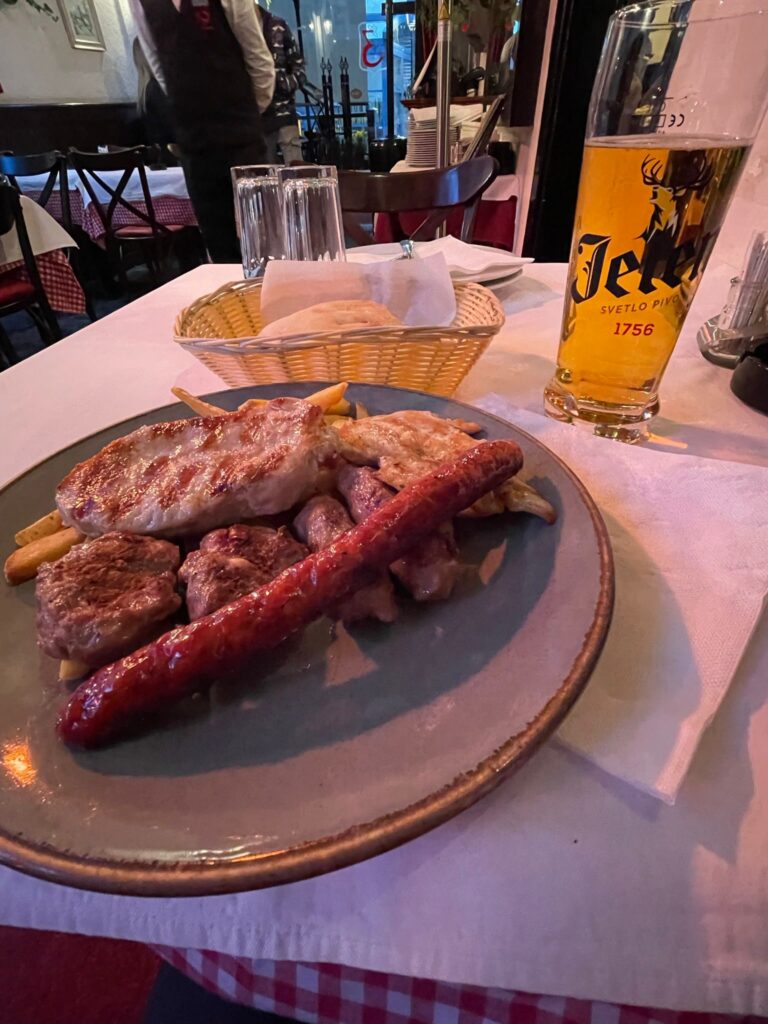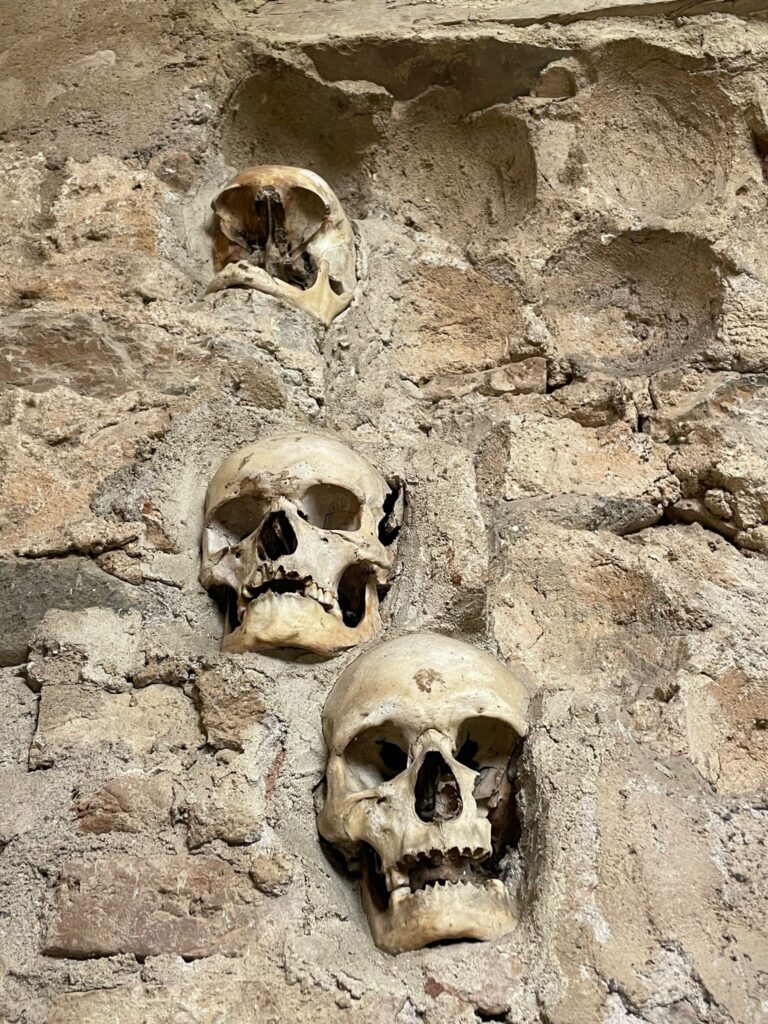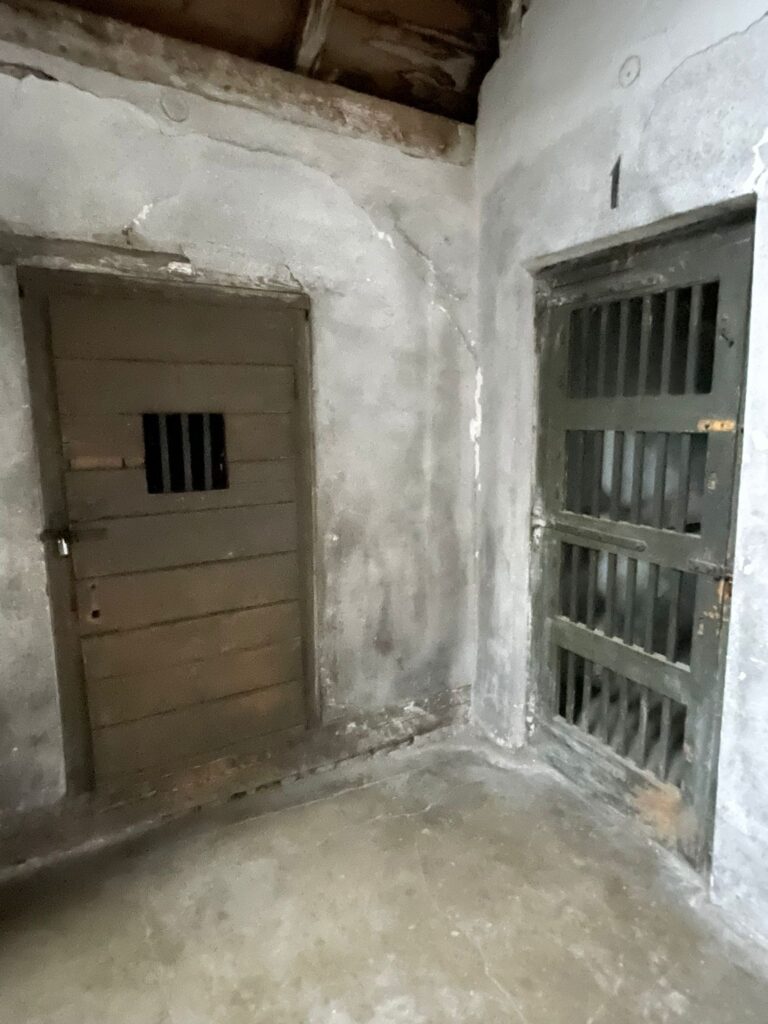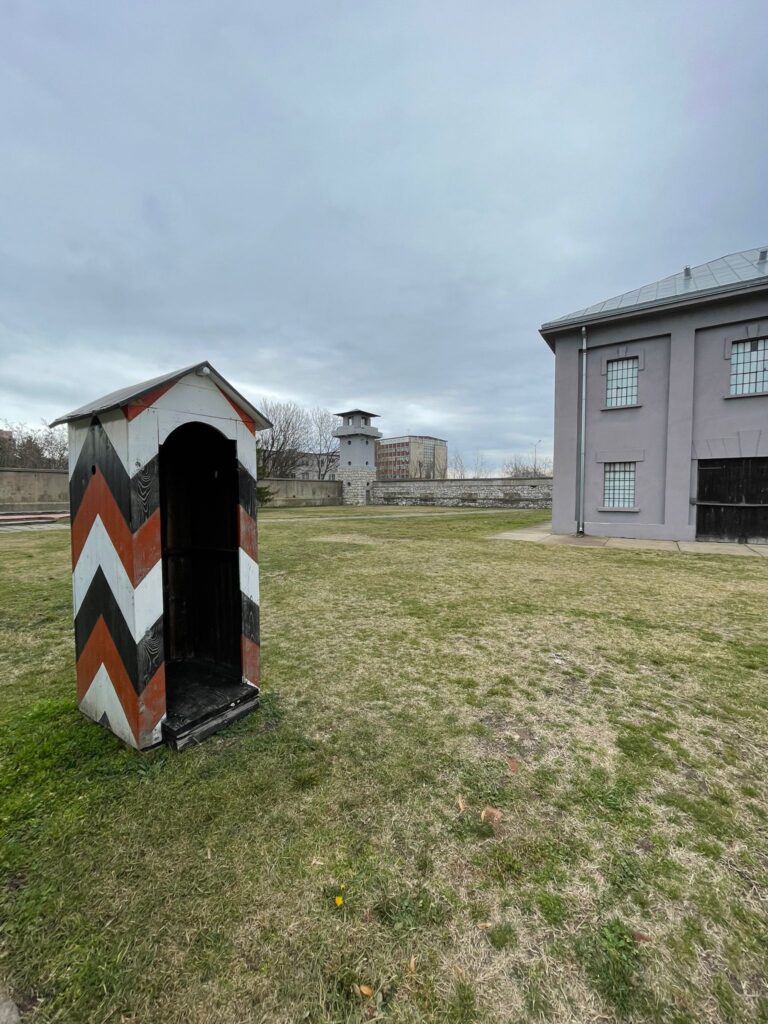Is Serbia Worth Visiting? A Trip To Belgrade And Nis
Disclaimer: Some links on this page may be affiliate links. If you purchase anything through them, I will receive a small commission at no extra cost to you! Further details in the Privacy Policy.
Introduction
Whilst travelling through Romania, I asked myself, “is Serbia worth visiting”?
Of course, there was only one way to find out the answer to that question. This was to take a shuttle van from Timisoara, Romania, down through the border and towards Belgrade. From there I would spend a few days in Serbia’s capital, before heading south to the city of Nis, most famous for its dark past.
Here I will explain a little about Serbia’s history, what to do here, and how to get by in Serbia (transport, costs and safety for example).

Background on Serbia
Serbia in the Socialist Federal Republic of Yugoslavia
Serbia was part of the Socialist Federal Republic of Yugoslavia (SFRY) from the end of WWII in 1945, until the collapse of communism in the early 1990s.
The SFRY was made up of seven countries which exist today. Serbia, Montenegro, Kosovo, North Macedonia, Bosnia Herzegovina, Croatia and Slovenia.
Neighbouring Albania was not a part of the SFRY despite a shared interest in communism, having become a hermit state under dictator Enver Hoxha, and later fallen out with Yugoslavia.
The Yugoslav Wars
When communism collapsed at the beginning of the 1990s, ethnic tensions led to a series of wars and disagreements over borders of new countries.
Serbia was widely viewed as the main villain in these wars. When the SFRY broke up, Serbia, Montenegro and Kosovo became the rump state of the Federal Republic of Yugoslavia (FRY). The Serbs fought their neighbours to unite ethnic Serbs under one banner.
Serbia wanted to take the Serb-majority parts of Bosnia Herzegovina, and killed over 8,000 in a genocide known as the Srbrenica Massacre. This took place in a region in eastern Bosnia, called Republika Srpska. This republic also encompasses much of northern Bosnia. Republika Srpska still exists today, and is where most Serbs in Bosnia Herzegovina live.
The massacre only accelerated the outside world’s view of Serbia as the antagonist in these conflicts.
The Kosovo War
In 1998, Serbia was involved in another war, the Kosovo War. This conflict came about, because Kosovo, a majority ethnic-Albanian region, wanted independence from Serbia. An Albanian rebel group called the Kosovo Liberation Army (KLA) began to attack Serbs within Kosovo. And Serbia responded by attacking the KLA.
However, the situation escalated. Civilians were intentionally killed on both sides. The KLA was widely viewed as a terrorist organisation, and Serbia committed multiple massacres of civilians. Most notably, Serbia murdered over 377 men and boys in the Meja massacre, before taking their bodies back to Serbia to bury in mass graves.
This and other atrocities forced NATO to get involved. NATO sided with Kosovo and bombed Serbian positions and interests. To begin with, only in Kosovo, but this expanded to Serbian territory as the extent of the atrocities became known.
NATO involvement turned the war in Kosovo’s favour, and Serbian leader Slobodan Milosevic was forced to agree a peace treaty, withdrawing his troops and ending the war.
NATO sent 50,000 peacekeeping troops to Kosovo, with 5,000 still in place today. The goal is for NATO troops to work alongside Kosovo’s armed forces, until they have enough strength to hold the territory without outside support.
Serbia After the Kosovo War
Kosovo declared independence from Serbia in 2008, and has since been recognised by over 100 countries as a country in its own right.
Serbia remains unhappy about this, and still views Kosovo as a part of Serbia. The involvement of NATO in both Kosovo, and Bosnia before that, has made Serbia very anti-western.
Where most people know that Belarus is a key ally of Russia in tensions between east and west, few people know that Serbia are also staunchly pro-Russian.
Unlike Belarus, you won’t find Soviet relics plastered around Serbia. But you will find a lot of distrust of western countries, and support for Russia. The “Z” symbol which became infamous during the Russia-Ukraine war is not uncommon in Serbia. Walk around Belgrade and chances are you will come across Z graffiti on more than one occasion.

Even in the hostel I stayed in, I went to grab a drinking mug from the cupboard, and there was the face of Vladimir Putin staring back at me.

Although as a tourist from a western country, you will most likely be greeted warmly by the hospitable Serbs, as long as you don’t voice favourable opinions on an independent Kosovo.
Serbia applied to join the EU in 2009, but does not seem close to joining due to differing views on a number of issues. Most notably, Serbia refuses to recognise Kosovo as independent. Also, Serbia refused to back western sanctions on Russia after their full-scale invasion of Ukraine in February 2022.
Is Serbia Safe to Visit?
Despite their dubious recent history, and frosty relations with western countries, Serbia is safe to visit.
Serbia follows the safety script of most other Balkan countries.
Crime is low, with violent robberies and physical attacks incredibly rare. Pickpocketing is one issue you may have to look out for however.
Landmines can be problematic in some of the more remote parts of the country. Most landmines have been cleared now, making Serbia safer than many of its neighbours in this respect. However, it is still wise to be careful if you go off the beaten path, and consider trekking in remote and border regions.
You do not have to worry about mines in Belgrade or any other major city.
Serbia can have earthquakes, although they are very rare. The last major one was the 2010 Kraljevo earthquake which killed 2 and damaged 6,000 buildings. Despite this, the risk of earthquakes in Serbia is very low.
When is the Best Time to Visit Serbia?
Having gone to Serbia in the bleak winter months, I don’t recommend this. I was there at the end of February, with snow on the ground and icy winds which led to a less favourable experience in Serbia.
April-October are the best months to visit. This is when the weather is warm and you can enjoy Serbia more.
The summers can be quite humid in most of the country. Only the south has dry weather.
Serbia is landlocked, meaning it doesn’t attract big crowds seeking out beach weather. As a result, Serbia doesn’t see a spike in summer accommodation costs like neighbouring Montenegro or Croatia.

How to Visit Serbia
You can visit Serbia visa-free if you have a passport from any European country. Most citizens of countries in the Americas qualify for visa-free access to Serbia. Notable exceptions include Bolivia, Ecuador, Cuba, Venezuela and much of Central America.
Other major countries with visa-free access to Serbia include China, Japan, South Korea, Australia, Indonesia and the UAE.
How to get to Serbia
Serbia is easy to reach from anywhere other than Kosovo (see below for more on that situation). There are three airports in Serbia: in Belgrade, Nis and Kraljevo. Belgrade’s Nikola Tesla Airport flies to almost every major country in Europe. The exceptions are Ireland, Iceland, Finland, Belarus and Ukraine.
Interestingly, you can also fly between Serbia and Russia. This is a result of Serbia defying the EU’s desire for sanctions and wishing to retain a strong relationship with Russia.
Outside of Europe, you can fly to China, the USA, the UAE, Qatar, Egypt and (from December 2023) Israel from Belgrade.
Nis offers a tiny amount of international flights to other European countries. Whilst Kraljevo’s sole international route, to Istanbul, ends in December 2023.
Buses travel to Serbia from a number of European countries, including most of its neighbours.
You can take a minivan from Timisoara in Romania to Belgrade. Unfortunately there are no buses from here. However your accommodation will be able to contact the van company and get you a seat for around £23 ($29).
How to Travel in Serbia
Trains are the cheapest, yet slowest way of getting around in Serbia. They connect key locations such as Belgrade, Nis and Novi Sad.
Buses are more frequent and connect more destinations. They are the best option for faster travel, and for connecting more remote parts of the country.
Can you Visit Serbia after Visiting Kosovo?
It depends. If you came to Kosovo from Serbia, then yes, you can go back the other way and you won’t have any problems.
However if you arrived in Kosovo from any other country, then you may have issues heading up to Serbia. This is because Serbia still recognises Kosovo as part of its territory. They believe that a Kosovo stamp in your passport is a sign of illegal entry into Serbia.
To get around this, simply leave Kosovo and enter Serbia through any other country. You are very unlikely to have any issues then.
Is Serbia Expensive to Visit?
Is Serbia expensive for tourists? No. You can find accommodation starting from around £10/$12 per night. A meal in Serbia will cost around £5-10 ($6-12). Transport around the country is very cheap. The train from Belgrade to Nis for example cost £7/$9.
Activities were also ultra affordable. I paid a combined total of around £8 ($10) for three activities in Serbia: A Partizan Belgrade football game, entrance to the Skull Tower in Nis, and entrance to Nis’ Crveni Krst Concentration Camp.
What about the capital? Is Belgrade expensive to visit? Not really. Prices are marginally higher, particularly if you eat in the touristy Skadarlija district, famous for its restaurants and live Serbian music. Accommodation is also marginally higher in the capital. Yet the differences are small and Belgrade still won’t break the budget.

What are the Best Places to Visit in Serbia?
Visiting Belgrade
Europe’s Rave Capital
Is Belgrade worth visiting? Many would say yes. It is famous for being the rave capital of Europe. Nightlife is massive in Belgrade. It’s a city popular for splavs: floating nightclubs that lie on the Sava and Danube rivers. They are popular with celebrities amongst others, and bring a lot of tourists to the Serbian capital.
Beyond nightlife, the Serbian capital is worth visiting for other reasons.
Visiting Belgrade Fortress
Belgrade Fortress is free to enter and attracts an estimated 2 million visitors per year. This strategic fortification is built on the confluence of the Sava and Danube rivers, where it was built over 2,000 years ago. The entire city of Belgrade was within the walls of the fortress for many centuries. It was conquered by various empires throughout history, and remains in good shape today. You can walk around, explore the ramparts, and view a wide range of heavy weaponry which has been left for display purposes as the Belgrade Military Museum.

Watching Football (Partizan or Red Star Belgrade)
Belgrade also has a reputation for its fearsome football culture. Red Star Belgrade are former European Cup (now Champions League) winners, whereas bitter rivals Partizan were once runners-up. The two clubs are famous for their passionate support, known to create an intense atmosphere.
I went to a Partizan game in Belgrade, but things did not go as planned. The game was on a Sunday, and ended up being called off due to heavy snow. It was rescheduled for the next day. But a Monday afternoon game was terrible for attendances, and maybe 200 people were in the ground. This led to zero atmosphere meaning I wish to come back and enjoy a better football experience in Serbia. A Red Star Belgrade game in Europe would be the ideal match to attend. Or the eternal derby between Red Star and Partizan.
The derby is said to be the most intense game in Serbian football. Although Red Star are the biggest club and bring the best support to any fixture in Serbia if you are only able to watch a standard league game.

Elsewhere in Belgrade
Other popular activities in Belgrade include visiting the St. Sava Temple, a traditional Serbian Orthodox Church. And checking out many museums across the capital. These include the Nikola Tesla Museum, a must-visit for science enthusiasts. The Museum of Yugoslavia gives you an insight into how life was before the breakup of the SFRY. And the National Museum has several art galleries to explore.
Visiting Nis
Nis is the third-largest city in Serbia, and has gained notoriety as a hotbed of dark tourism. If this interests you, it is certainly one of the main places worth visiting in Serbia.
Visiting the Skull Tower (Cele Kula)
The Skull Tower (Cele Kula) is… well, exactly what it says on the tin. It’s a tower full of skulls.
In 1809, a Serbian uprising took place against Ottoman rule.
With the Serbs facing certain defeat and execution, commander Stevan Sindelic detonated a series of gunpowder kegs killing himself, his colleagues, and many enemies in one go.
He was idolised as a hero for these actions.
A tower was built by the Ottomans, made of 952 skulls. Each skull was from a Serbian soldier who died during the uprising. And 58 skulls remain in place today.
Separate from the other skulls, is that of Sindelic. Encased in glass, on a red cloth, it sits next to the tower which remains today as a symbol of Serbian independence. Needless to say, it wasn’t the Ottomans who respectfully placed Sindelic’s skull in a position of prominence.
For years, the tower of skulls was left as a reminder from the Ottoman Empire, that they should not be messed with. It was designed to instill fear into the hearts of their enemies.
The Serbs later kept it as a memorial paying homage to Serbia’s independence.

Crveni Krst Concentration Camp
Cele Kula is not the only bleak “attraction” that Nis has to offer. Just like Poland’s Auschwitz, or Dachau in Germany, Nis is home to a bleak concentration camp which hosted numerous atrocities in the early 1940s. Around a third of the 35,000 prisoners held here, never made it out alive.

Prisoners were held in a grim grey block, allowed out only for 16 hours of manual labour every day.
Armed guards stood in watchtowers to make sure prisoners could not escape. It was a truly unpleasant place.
The camp was built in mid-1941, and saw a major rebellion take place in February 1942. The fences were stormed by 147 inmates trying to escape. Two thirds were successful, with around 50 being killed by the guards for their efforts. The survivors were free to spread word about the camp’s darkest secrets and alert enemies of the occupying forces.
I also walked through the camp’s bleak cell block. I wore a warm coat and still felt incredibly cold just passing through for a few minutes. Prisoners didn’t have the luxury of warm clothing. They were forced to shiver 24/7 without any escape from the discomfort and misery within the camp. It’s impossible to imagine the horrors of those once held between these walls.

Anyone with an interest in history should come to Crveni Krst.

Where Else is Worth Visiting in Serbia?
I’ll keep this section short, as I don’t go into detail on places I’ve not been to. However other popular places in Serbia include Novi Sad, an Austro-Hungarian-style city in the autonomous region of Vojvodina. Golubac Fortress looks like a cool fortification on the Serbia/Romania border. Whilst Tara National Park, near the Bosnia Herzegovina border, looks to have some stunning scenery.
Where to Stay in Serbia
This blog is based on authentic experiences. Therefore I will only talk about places I actually stayed in. If you want a selection of “best low/mid-range/luxury hotels” based on a few Google searches, then Google is indeed the place to go.
If you want to know about the two hostels I stayed in from personal experience, and whether they are worth visiting, read on.
Belgrade – El Diablo Hostel (£13/$17 Per Night)
Pros
It was well-located, okay-priced and the bathrooms were kept clean.
Cons
The rooms in this hostel were a little cramped. There are also no quiet spaces.
Overall
It was okay. Must admit I didn’t love this place, which has a whopping 9.7 rating on Hostelworld. It wasn’t a bad place, but I do feel it’s rather overrated. Would I stay here again? Maybe. Would I say it’s one of the best hostels worth visiting in Serbia? Not really.
It has all the basics and is kept relatively clean. I guess that’s the main thing. Would personally give this a 6/10.
Nis – Bloom Inn (£11/$14 Per Night)
Pros
Very clean hostel and the beds were incredibly comfy. The wifi worked perfectly, and the staff were very friendly here. They were very enthusiastic upon finding out I was a Southampton football fan. Our owner is a Serb, named Dragan Solak, and the staff were very keen to talk about him.
Even if you aren’t enthusiastic about the beautiful game, the staff will make you feel very welcome here. Accommodation was also very affordable and located close to the city centre.
Cons
Struggling to think of any in all honesty. I guess the negatives in this hostel lie in the form of what it hasn’t got, rather than what it does badly (nothing).
There was no breakfast option here, and it lacks large common areas.
Overall
Excellent. Really enjoyed staying at the Bloom Inn and would absolutely stay here again in the future. One of the better hostels I’ve stayed in.
Is Serbia Worth Visiting? Final Thoughts
Must admit that Serbia didn’t do it for me personally, but that doesn’t mean it isn’t worth visiting.
Bleak weather dampened (no pun intended) my time here, with a mixture of pouring rain, freezing snow, and gloomy overcast skies during my week in Serbia.
Is Belgrade worth visiting? Again, I won’t dissuade people from visiting Serbia’s capital just because of my own personal opinions. If you’re into museums, you’ll like Belgrade. If you visit Belgrade Fortress in better weather than I did, you may enjoy it if that’s your sort of thing. And it’s a city with a major draw to ravers. Those who have gone to the capital of Serbia for nightlife say it’s absolutely worth visiting.
And Nis, is certainly an appealing city for anyone who is fascinated by history. Nis was the more interesting of the two cities for me. But travel is subjective. A raver will always prefer Belgrade and a historian would most likely prefer Nis.
Part of my reason for wanting to visit every country, is to see first hand what each nation has to offer. Some are better than expected, and some are worse. Some countries have hidden gems to discover, wonderful locals, fantastic food, fascinating history, wild nightlife, incredible nature… There are 197 countries in the world (debatable), but there are at least a few great countries for every individual. Someone’s favourite country is someone else’s worst. The country of one person’s honeymoon is also the country of one person’s knifepoint robbery.
I guess the point I make is that everyone will have different experiences in different countries. And that means personal opinion sometimes needs to be put to one side when judging whether or not a country is worth visiting.
Did I like Serbia overall? I wasn’t a massive fan. Is Serbia worth visiting. It certainly is.
Come here yourself and make up your own mind.
If you wish to read about every country visited on my quest to explore them all, my destinations page lists posts on all countries I’ve posted about so far.
